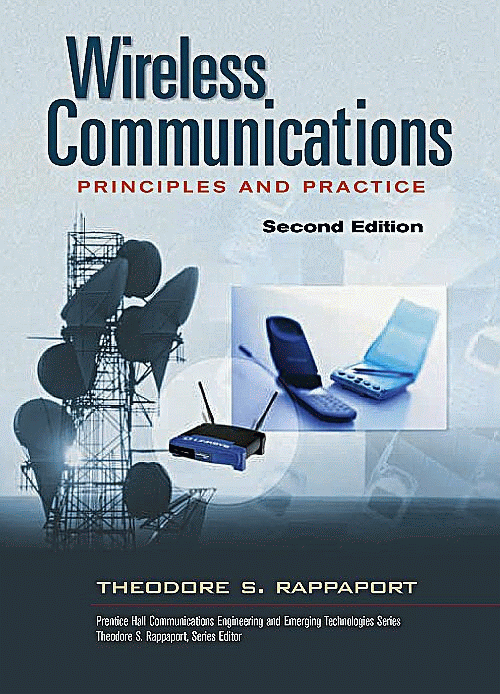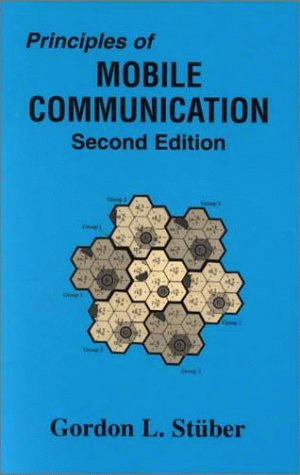

Brief Overview of Cellular Standards
There are five cellular technologies currently in use in the United States and in the areas covered by these web sites:
AMPS (Advanced Mobile Phone System) [AT&T and Verizon, accessible with Sprint]
Most CDMA and TDMA phones will fall back to AMPS system when no digital
signal is available (GSM phones do not have analog capability). Battery life is
greatly reduced when operating in analog mode. Coverage is excellent throughout
the area, and nationwide. The FCC has given carriers with AMPS networks
permission to shut them down in 2008.
AMPS has the widest coverage of any standard. Its coverage is essentially a superset of all the digital coverage. This is why a knowledgeable buyerwould never sign up for service or buy a handset that did not support AMPS. You can buy handsets that support TDMA and AMPS, CDMA and AMPS, and GSM, TDMA, & AMPS (though the latter is not available in this area). In short, even though you have to choose one of three digital standards when selecting a carrier, you do NOT have to give up AMPS capability unless you choose GSM.
Roadside call boxes use the AMPS systems with coverage provided by Verizon. GM's On-Star system uses AMPS.
CDMA (Code Division Multiple Access)
[Sprint and Verizon]
CDMA is available at the 800Mhz "Cellular" frequency and the 1900
Mhz "PCS" frequency. Despite the clever marketing campaign by Sprint,
PCS is still cellular. Sprint is at 1900Mhz, Verizon is
mostly at 800Mhz but uses the less desirable 1900Mhz in some areas such as
Florida and parts of Texas. Verizon coverage is excellent throughout this area (Sprint
coverage at
1900Mhz is okay, but not as good as Verizon) and nationwide.
High-speed data (1.44Mb/s peak) is available (CDMA2000 1x). Most small cellular
companies choose to go to CDMA 800 Mhz when they move from AMPS to digital.
This is because TDMA is obsolete, and the smaller companies were at 800Mhz AMPS,
and 800Mhz GSM is very new and there are almost no handsets available yet. This
also means that the smaller companies are more likely to have roaming agreements
with Verizon than with any other carrier. So for CDMA roaming, Verizon is the
best choice.
GSM (Groupe Spéciale Mobile or Global System for Mobile Communications)* [Cingular, T-Mobile, AT&T is converting to it]
Coverage is fair throughout this area and
nationwide, and it is improving as AT&T deploys their GSM network. Some
lightly populated states have no GSM coverage at all, and some of these states
are frequent tourist destinations, i.e. Alaska, Vermont. GSM phones do not roam onto
AMPS or CDMA or TDMA, (their are phones that make this possible, but they are
not available in this area). A GSM-only phone is not a wise choice at this time because of the coverage issue. High-speed data (1Mb/s peak) is available.
iDEN (Integrated Digital
Enhanced Network) [Nextel]
Only
Motorola makes phones for the iDEN system. iDEN coverage is not bad in the urban
areas, but there is no coverage outside of urban areas and no
roaming onto other systems. This system is not recommended for individual users
due to the lack of coverage outside the urban core. Nextel is very close-mouthed
about their plans, but it appears as if they are going to overlay CDMA on their
iDEN network, and eventually phase out the iDEN network. iDEN provides data
services, but at low speed.
TDMA (Time Division Multiple Access) [AT&T]
Coverage
is excellent throughout this area, and nationwide. However the AT&T TDMA network
is over-capacity in New York City and should be avoided. In Northern and
Southern California the AT&T TDMA network is excellent and not over
capacity.
|
GAIT (GSM/ANSI-136 Interoperability Team) [Cingular] In order to smooth the transition from TDMA/AMPS to GSM, a specification that allows interoperability between TDMA/AMPS and GSM was developed. The present specification is in "Phase 1+" and does not include handoff between TDMA/AMPS and GSM (call will be dropped if a call begun on GSM cannot be handed off to another GSM cell). However the next phase of the specification is supposed to include intersystem handoff (two and a half years ago they said that the follow-on phase is being defined). Cingular has deployed GAIT, and is now selling the Nokia 6340i and the Sony Ericsson T62u which combines 1900 Mhz GSM, 800 Mhz GSM, AMPS, and TDMA (not available in New York City). AT&T is selling the T62u GAIT phone. The GAIT spec (phase 1+) can be found at: http://www.3gamericas.org/pdfs/gait-h-1-1-5-0.pdf. Realistically, it's unlikely that GAIT will ever reach phase 2 because by that time GSM will be so pervasive in the U.S. that there will be no need for GAIT anymore. What really will be needed is GSM/AMPS phones, because rural areas are unlikely to get GSM or CDMA coverage in the near future. It is important to note that GAIT was developed for the carriers' benefit in easing the transition from TDMA to GSM. It was not intended as a technology to allow subscribers to access multiple networks to improve roaming coverage. There are some very upset Cingular GAIT customers who expected that GAIT would solve the GSM coverage issue, allow AMPS roaming everywhere AMPS exists, and provide TDMA coverage on non-Cingular networks. |
You can see the spectrum and frequencies for the various wireless communications standards at: http://www.rfcafe.com/references/electrical/wireless_comm_specs.htm .
You can read about mobile telephone history, standards, principles, & frequencies and more at: http://www.privateline.com/PCS/history.htm .
If you want to learn more about cellular technology and mobile communications I suggest two books. The first is Wireless Communications, 2nd edition, by Theodore S. Rappaport. The second is Principles of Mobile Communication, 2nd, Edition by Gordon L. L. Stuber. Just click on the picture of the book below and you'll be taken directly to Amazon.com and can purchase the book (I appreciate it when you use my Amazon.com associate account which is built into these links). However you may find the books in paperback (or used) for less than Amazon charges. These are highly technical books, not casual reading.
AT&T GSM versus AT&T
TDMA
AT&T is deploying their next generation GSM network nationwide.
AT&T GSM suffers from some of the same inherent problems. In-building
coverage will not be as good with GSM 1900 Mhz as it is with TDMA 800Mhz.
Eventually AT&T will deploy 800Mhz GSM which will correct this problem, but
for now all their cells, and all their phones but one, are 1900 Mhz. This is not
just a GSM problem, Sprint PCS which operates a CDMA network at 1900 Mhz suffers
from the same in-building coverage problem.
With GSM you lose AMPS coverage though AT&T has finally adopted GAIT so their is one handset available that does support AMPS on GSM. Outside of GSM coverage areas you will have no coverage at all unless you get the GAIT handset.
If you must have GSM because you want a phone that works in Europe and Asia then AT&T is a better choice than Cingular/T-Mobile. If you already have AT&T and don't care about data services then stick with AT&T TDMA. If you must have data services but don't care about coverage in Europe or Asia then go with Verizon CDMA/AMPS.
Bottom Line on Cellular Standards
At this time, choose either CDMA (Sprint or Verizon) or TDMA (AT&T) for
service. The only real advantages of CDMA at this time are that it supports high
speed data and there is a better selection of phones. GSM (AT&T, Cingular and T-Mobile) is not going to be
a good choice for this area until coverage (for both) and capacity (for
Cingular) are improved, though with AT&T now offering a GAIT handset
(GSM+TDMA+AMPS), AT&T has become a viable choice with that single handset
(Sony-Ericsson T62u). See references 1,
2, 3,
4,
5,
6,
7,
8).
|
|
|
Return to New York City Cellular Carrier Comparison Return to San Francisco Bay Area Cellular Carrier Comparison |
|
|